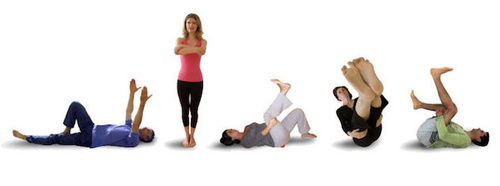Antigymnastics, description and use
Anti-gymnastics is a therapeutic technique that with slow and measured movements of the body brings about a muscular rebalancing. Let’s find out better.
> What is antigymnastics
> Benefits and contraindications
> For whom is antigymnastics useful
> The law in Italy and abroad
> Curiosities about antigymnastics

What is antigymnastics
Anti – gymnastics is a therapeutic technique with a curious name that proposes slow and measured movements of the body, aimed at a real muscular rebalancing and subjective body cognition. The goal of this method is not only to stretch the muscles but, through the repetition of peculiar movements, also to integrate the state of well-being thus acquired in daily actions. From a contracted and suffering body, thanks to this technique, we move towards a body full of energy and agility.
The anti-gymnastic movements were created by Thérèse Bertherat , based on the principles of the Mézières method . It is a class of exercises that have as their common denominator a conscious work on oneself, aimed at finding the place where tensions are hidden to relieve them through extension movements of the posterior muscles , in particular of the kinetic chains .. These kinetic chains are represented by the muscle tissues that we generally use in an upright position and which, over time, tend to shrink, harden and sore. The relaxation of the posterior muscles allows the automatic recovery of the functionality of the other muscles, allowing harmony and balance to the rest of the body.
Benefits and contraindications
Anti – gymnastics allows you to recover the mobility and vitality of those muscles that the events of life tend to contract, shorten and atrophy. Thanks to very small and extremely precise movements, which respect the physiology and muscular kinesiology of the subject, we are able to awaken all the forgotten and remote areas of our body, breaking the chains of rigidity, albeit without ever forcing the articular width of the body. person.
The main benefit and at the same time the key of antigymnasty is to make your muscles work for themselves and not against themselves . In fact, the technique is not limited to the mechanical aspect, but investigates the emotional aspects and psychic correlations in a global perspective of body and mind. It represents an effective tool that allows you to get out of stereotyped patterns of movements and gestures (which it is often difficult to correct), to eliminate physical and mental fatigue , to give breath and vitality to all the muscles of the body and to allow all the organism to function in a balanced way.
Antigymnasty has no contraindications , except for diseases that prevent movement.
READ ALSO All natural medicines
For whom is antigymnastics useful
The name will particularly appeal to the lazy. In fact, anti-gymnastics is far removed from sweating in the gym and can be practiced comfortably at home. It is particularly suitable for the correction of postural defects and for those who suffer from muscle and joint pain. Anti-gymnastics is also aimed at those who suffer from stress , anxiety , insomnia , headaches and digestive and intestinal difficulties. It can also prove to be a decisive help for neck and back pain from muscle contractures and for pathologies such as lordosis, kyphosis and scoliosis.
The law in Italy and abroad
In order to teach antigymnastics, in Italy it is sufficient to train for two years as an instructor . At the end of the second year, the student is awarded a qualification contract. Diplomas in kinesitherapy, psychomotor skills or psychology are recommended for admission. The AGTB association , present in different parts of the world and headed by Thérèse Bertherat, proposes methods for practicing antigymnastics at home and courses for antigymnastics trainers .
Curiosities on antigymnastics
Thérèse Bertherat chose the term “antigynasty” at the time of antipsychiatry because she believed that certain movements suggested for exercise only aggravated the problems of the diaphragm and the spine. In her words, “ We are told that our body needs to be strengthened, that we need to sweat and perspire. So, to get into shape, we get on the bicycle, hang from the backrest, run until we lose our breath, we start lifting weights. Instead, what we should do first of all is open our eyes, take the time to look at our body to understand how it works “.




























+ There are no comments
Add yours